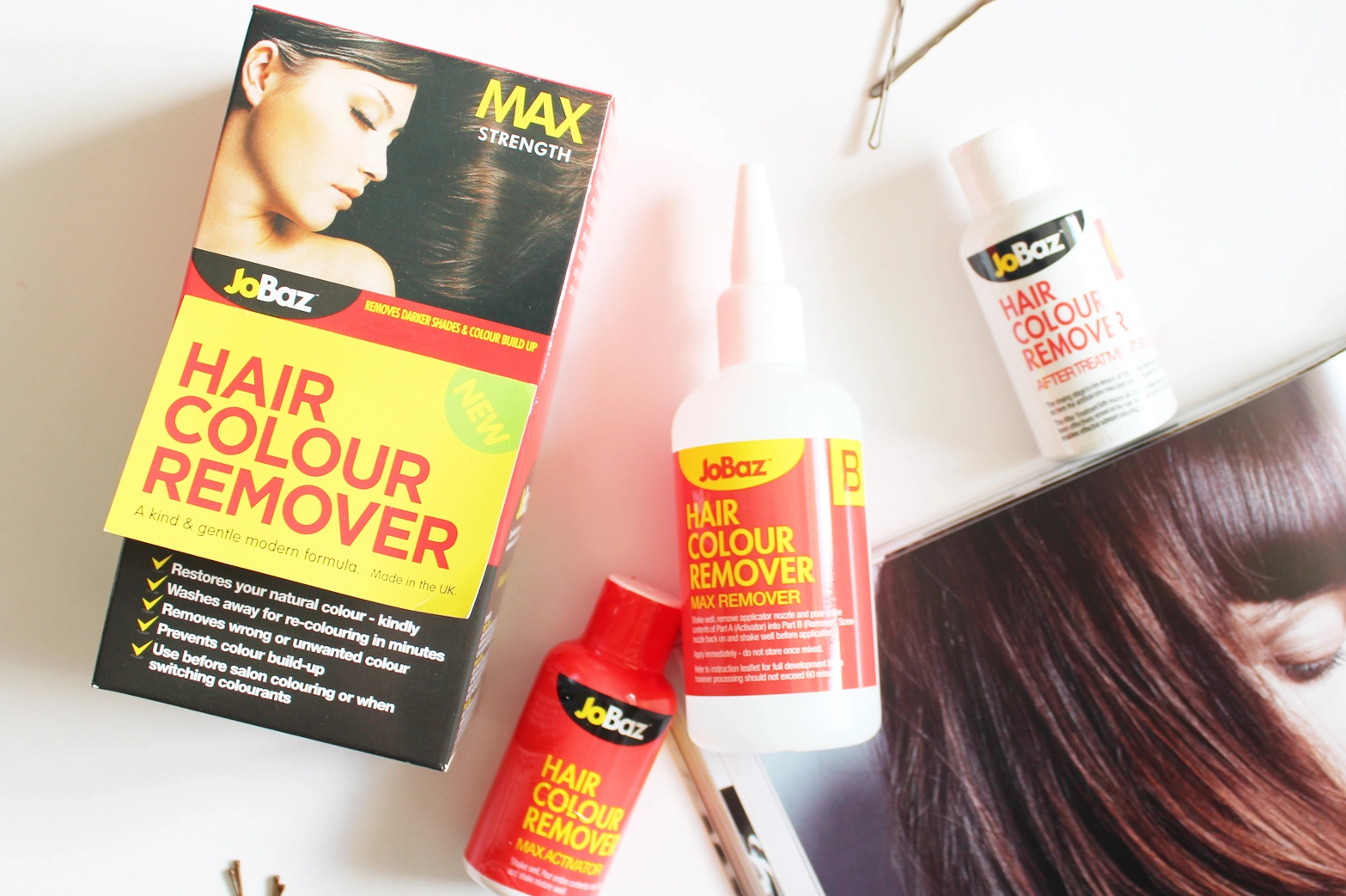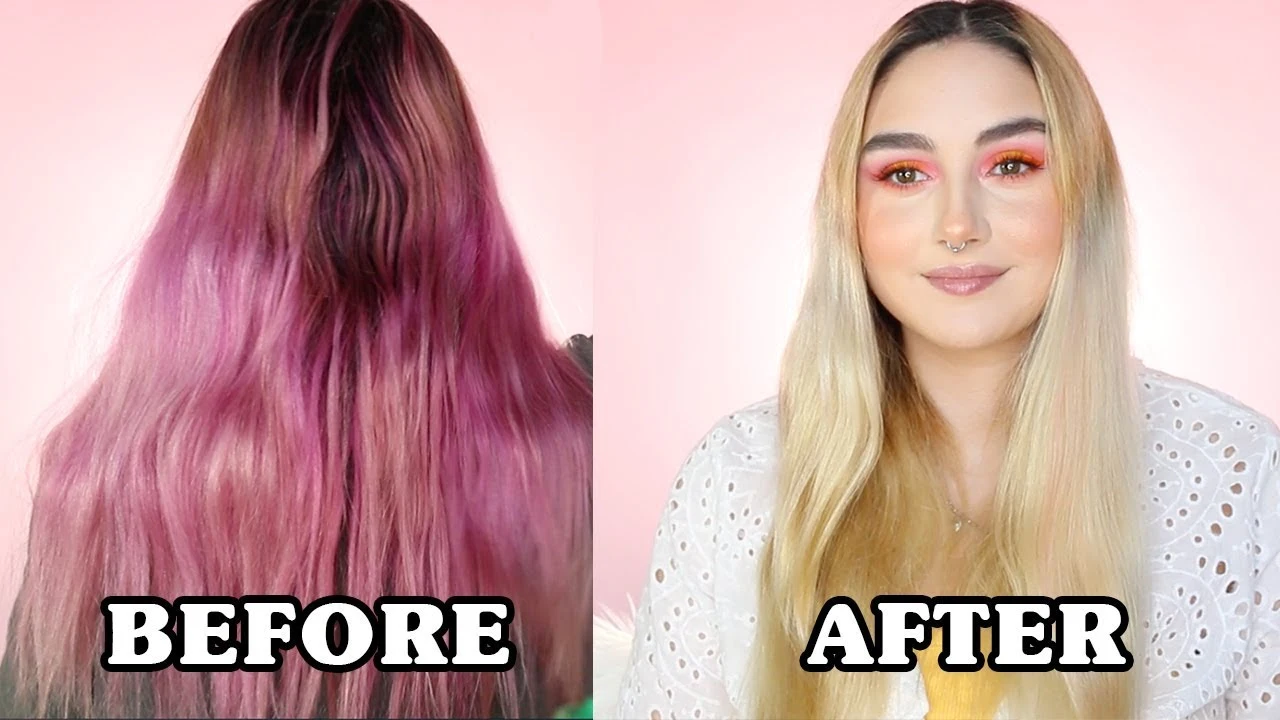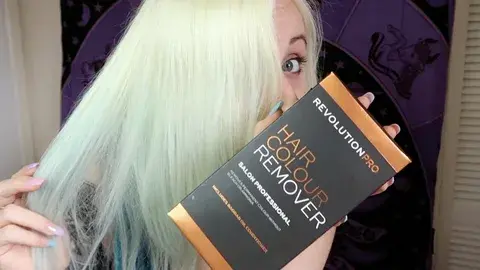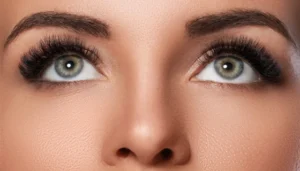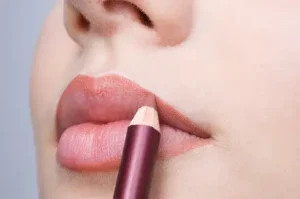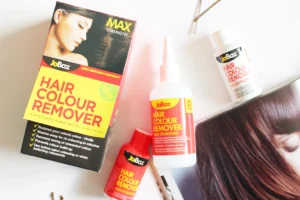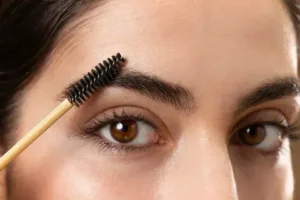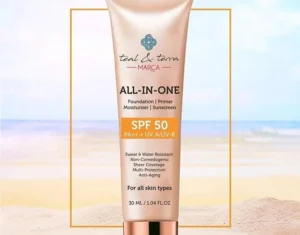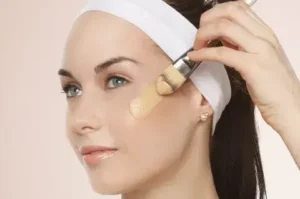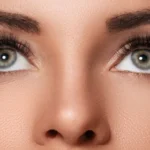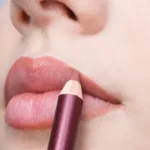Hair dye is a complex chemical cocktail that penetrates deep into the hair shaft, binding to the melanin pigments that give our locks their natural color.
Permanent hair dyes, the most common type, use small molecules that are able to enter the hair and oxidize, permanently altering the color.
Semi-permanent and temporary dyes, on the other hand, deposit color on the outer cuticle layer and gradually wash out over time.
Removing hair dye requires breaking down these chemical bonds and lifting the color from the hair. The specific approach depends on the type of dye used, the depth of color, and the overall condition of the hair.
Gentle methods like clarifying shampoos and baking soda can be effective for semi-permanent dyes, while stubborn permanent color may require more heavy-duty color removal products or even a visit to the salon.
Key Factors in Hair Dye Removal:
- Dye Type: Permanent, semi-permanent, or temporary
- Depth of Color: How deeply the dye has penetrated the hair
- Hair Condition: The health and porosity of the hair
Understanding these variables is crucial in selecting the right hair dye removal strategy.
Permanent color, for instance, will require more intensive treatment to fully lift the pigment, while a semi-permanent rinse may be lifted with a simple clarifying shampoo routine.
The chemical composition of hair dye also plays a role in the removal process. Permanent hair dyes typically contain small, highly-reactive molecules that can deeply penetrate the hair shaft and form new, stable bonds with the melanin pigments.
These bonds are quite strong and resistant to removal.
Semi-permanent and temporary dyes, on the other hand, rely on larger dye molecules that sit primarily on the hair’s outer cuticle layer.
While they don’t create the same deep, permanent bonds, these dyes can still be stubborn, especially if they’ve been repeatedly applied over time.
Assessing the depth of color is another crucial factor. The more deeply the dye has penetrated the hair, the more difficult it will be to remove.
Heavily saturated or previously bleached hair may require multiple rounds of color removal to gradually lift the pigment.
Finally, the overall health and porosity of the hair can impact the effectiveness of removal methods.
Damaged, porous hair will generally be more receptive to color stripping, while strong, healthy hair may put up more of a fight.
Proper pre-treatment and aftercare are essential to minimize harm during the removal process.
Preparing for Hair Dye Removal: Essential Steps to Take
Before attempting to remove your hair dye, it’s important to take a few preparatory steps to ensure the process goes as smoothly as possible. First, gather the necessary supplies, which may include:
- Clarifying Shampoo: Helps remove built-up product and prepare the hair for color removal.
- Color Remover: A specialized product designed to break down and lift hair dye.
- Deep Conditioner: To help restore moisture and strength after the color removal process.
- Gloves: To protect your hands from any harsh chemicals.
- Protective Eyewear: In case of splashing or accidental exposure.
Next, it’s a good idea to do a strand test on a small, inconspicuous section of your hair. This will help you gauge the effectiveness of your chosen removal method and assess any potential for damage.
Simply apply the color remover or other treatment to a tiny lock of hair and observe the results. If the test goes well, you can proceed with confidence.
It’s also crucial to carefully follow the instructions on any color removal products you use. Overuse or improper application can lead to excessive drying, breakage, or other undesirable outcomes.
Patience and attention to detail are key during this process.
Finally, be sure to set aside ample time for the removal process. Depending on the depth of your color and the method used, it may take several applications or even multiple sessions to fully lift the dye.
Don’t try to rush through it – rushing can lead to more damage.
Gentle Methods for Removing Hair Dye
For semi-permanent or temporary hair dyes, gentler removal methods may be sufficient. Here are a few effective options to try:
Clarifying Shampoo
Regularly using a clarifying shampoo can gradually lift semi-permanent hair color over time. Look for shampoos containing sulfates or chelating agents that help dissolve and wash away the dye pigments.
Be sure to follow up with a deep conditioning treatment, as clarifying shampoos can be quite drying.
Tips for Using Clarifying Shampoo:
- Shampoo hair 2-3 times per week with the clarifying formula
- Allow the shampoo to sit for 5-10 minutes before rinsing
- Avoid heat styling and chemical treatments during the removal process
- Supplement with regular deep conditioning to maintain hair health
Baking Soda and Dish Soap
Mix equal parts baking soda and dish soap with a bit of water to create a paste. Gently massage this mixture into your hair and let it sit for 5-10 minutes before rinsing.
The abrasive baking soda and degreasing properties of the soap can help break down color molecules.
How to Use the Baking Soda and Dish Soap Method:
- Wet hair and apply the baking soda-dish soap mixture from roots to ends
- Gently massage the paste into the hair, taking care not to agitate the scalp
- Allow the mixture to sit for 5-10 minutes before rinsing thoroughly
- Shampoo and condition as usual, focusing on deep conditioning
Vitamin C or Aspirin
Crushed vitamin C tablets or aspirin can also be effective at removing semi-permanent hair dye. The acidic nature of these ingredients helps neutralize the alkaline dye compounds, causing them to lift from the hair.
How to Use Vitamin C or Aspirin for Hair Dye Removal:
- Crush 2-3 vitamin C tablets or aspirin into a fine powder
- Mix the powder with a small amount of water to create a paste
- Apply the paste to dry hair, focusing on the areas with dye
- Cover with a shower cap and let sit for 30 minutes to 1 hour
- Rinse thoroughly and shampoo as normal
- Repeat the process as needed until desired color is achieved
These gentle, DIY methods can be effective for gradually removing semi-permanent or temporary hair dyes.
However, they may require multiple applications and won’t be as powerful as professional-grade color removers. It’s important to monitor your hair’s condition and avoid over-stripping the strands.
Professional Hair Dye Removal Techniques
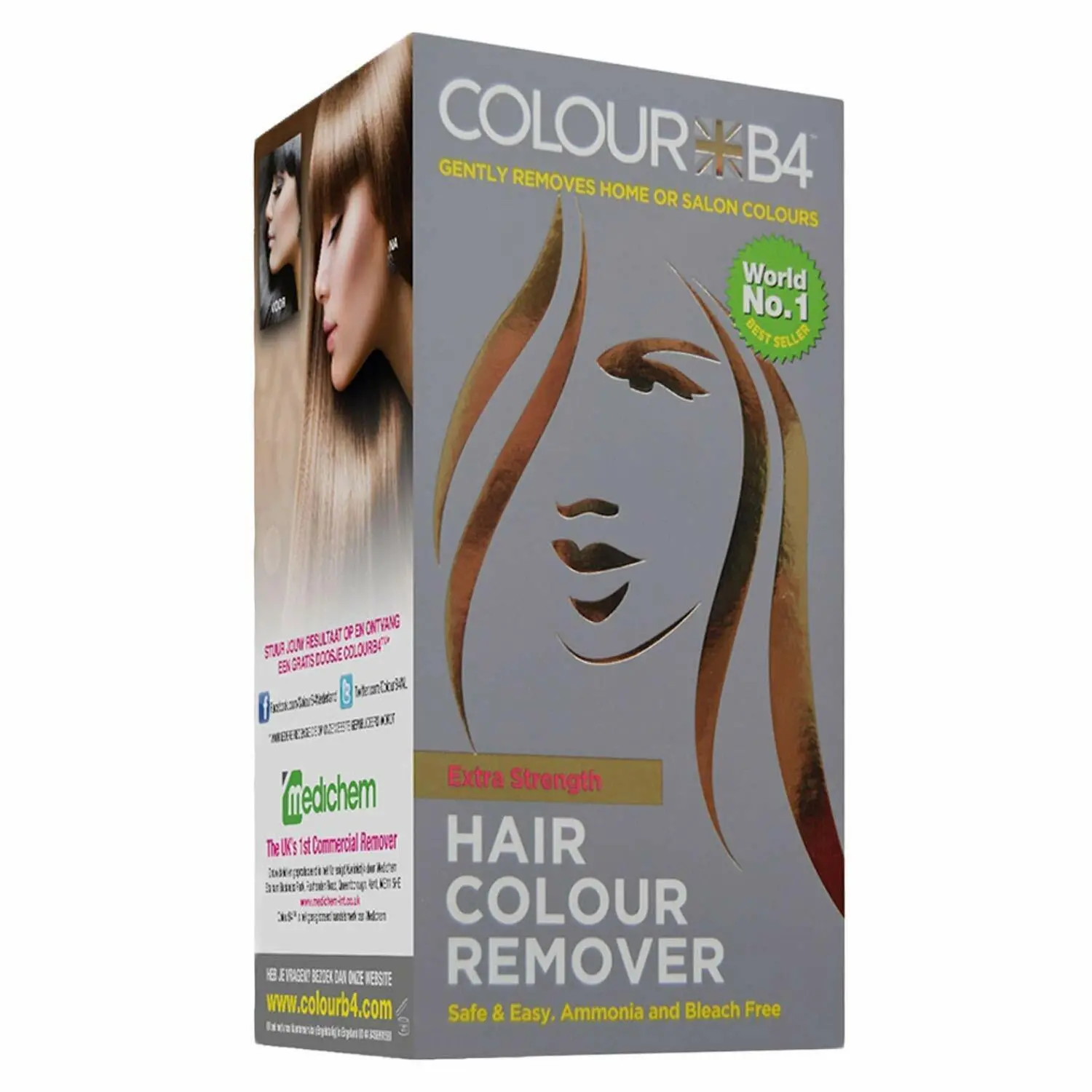
Salon-grade color removal products and processes can be more effective and less damaging than DIY methods. Some common professional techniques include:
Color Remover Treatments
Salon-exclusive color removal products contain stronger reducing agents that can break down and lift even deeply-embedded permanent hair dye.
These treatments often involve applying the remover, allowing it to process, and then rinsing or shampooing to lift the color.
What to Expect with a Salon Color Remover:
- The colorist will assess your hair and recommend the appropriate remover
- The product is applied to dry hair and allowed to process for 15-45 minutes
- The remover is then rinsed or shampooed out, lifting the dye pigments
- This process may need to be repeated several times to achieve the desired result
- Expect some drying and potential damage, so deep conditioning is essential
Bleach-Based Lighteners
In some cases, carefully applied bleach can help gradually lift color, though this carries a higher risk of damage.
Bleaching can be an effective way to remove stubborn permanent hair dye, but it must be done with extreme caution to avoid over-processing the hair.
Considerations for Bleach-Based Color Removal:
- Bleaching can be harsh and damaging, especially on already-compromised hair
- Multiple bleaching sessions may be required to lift the color, further stressing the hair
- Colorists will assess the hair’s condition and use the mildest bleach formula possible
- Ample time for deep conditioning and strengthening treatments is crucial
Color Correction Services
Skilled colorists can strategically apply a series of toners and demi-permanent colors to gradually color-correct the hair.
This involves carefully depositing new pigments to neutralize or blend away the unwanted dye.
What to Expect from a Color Correction Service:
- The colorist will analyze your current color and develop a multi-step plan
- They may start by applying a color remover, then deposit a toning shade
- Demi-permanent or semi-permanent colors may be used to gradually blend the new shade
- Several appointments may be required to achieve the desired result
- This process is gentler than repeated bleaching, but still requires significant time
It’s important to note that professional color removal can be a lengthy and potentially expensive process, especially for drastically different shades or severely damaged hair. Patience and proper aftercare are key to maintaining the health and integrity of your hair throughout the journey.
Aftercare and Maintenance After Hair Dye Removal
Regardless of the method used, removing hair dye can be a harsh process that leaves the hair in need of some extra TLC.
Be sure to follow up with a deeply nourishing conditioner or hair mask to replenish moisture and strengthen the strands.
Post-Removal Hair Care Tips:
- Use a gentle, sulfate-free shampoo to avoid further stripping the hair
- Apply a rich, creamy deep conditioner or hair mask 1-2 times per week
- Avoid heat styling, chemical treatments, and excessive washing
- Introduce protective styles like braids or buns to minimize manipulation
- Use a leave-in conditioner or hair oil to keep strands hydrated
Going forward, be gentle with your hair and avoid heat styling or further chemical treatments until it has fully recovered.
Regular deep conditioning, minimal washing, and using color-safe products can all help maintain the health and integrity of your newly natural hair.
Maintenance Tips for Removed Hair Dye:
- Wash hair 2-3 times per week with a gentle, sulfate-free shampoo
- Use a color-protecting conditioner or mask 1-2 times per week
- Limit heat styling to avoid further damaging the hair
- Apply a leave-in conditioner or hair oil to keep strands hydrated
- Consider using a toning shampoo to keep brassiness at bay
- Trim regularly to remove damaged ends and promote healthy growth
With the right approach and a bit of patience, you can successfully remove unwanted hair dye and reclaim your gorgeous natural color.
By understanding the science behind the process and employing the proper techniques, either DIY or with the help of a professional, you’ll be back to your true self in no time.
Frequently Asked Question (FAQs)
Q: How do I permanently remove hair dye from my hair?
A: Use a color remover.
Q: Does Vaseline remove hair dye?
A: Products like Vaseline and Aquaphor work the same way.
Q: How to fade hair dye quickly?
A: Using a clarifying shampoo or anti-dandruff shampoo.
Q: Will I damage my hair if I dye it once?
A: When you change the structure of your hair strands, slight damage is unavoidable.
Q: Can you remove permanent hair dye?
A: Removing permanent hair dye requires a trip to the salon.
Conclusion about hair dye
Removing unwanted hair dye can be a challenging but rewarding process. By understanding the science behind hair color and the various removal methods available, you can take the necessary steps to regain your natural locks with confidence.
Whether you opt for gentle, DIY techniques or seek the expertise of a professional colorist, patience and proper aftercare are key.
Gradually lifting the color, while maintaining the overall health and integrity of your hair, will ensure a seamless transition back to your desired shade.
Remember, hair dye removal is not a one-size-fits-all endeavor. Carefully assess the type of dye, depth of color, and condition of your hair to select the most appropriate approach.
With the right strategy and a commitment to gentle, nourishing care, you can successfully remove hair dye and embrace your natural beauty once again.
